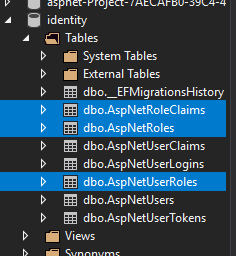来说说 RBAC (role based access control)
这是目前全世界最通用的权限管理机制, 当然使用率高并不是说它最好. 它也有很多局限的.
我们来讲讲最简单的 role based 概念.
想象一间公司开始的时候,只有一个管理人.
一个 application 一个 user, 只要登入就可以了.
后来业务大了,就要请人来分工,我们不可能简单的开多一个 user 给新人,因为新人只需要做一部分的工作而且外人是不可靠的.
所以我们需要有限权.
一般上的做法是从 task 出发. 我们把所有工作切分成多个 task (比如,管理订单, 管理产品, 管理订货, 管理钱..等等)
一般上一个 task 会有一个对应的菜单和 ui 操作页面, 页面里就涉及多个表的 CRUD 等等操作了。
分工的概念就是, 一个 user 可以负责多个 task. 比如我要你去管订单和订货。
但是任务多起来就不好管理了,所以我们又往上创建一个角色或者职位的概念. 可能是叫经理, 客服, 采购员等等.
最后变成了 : 一个 user 对应多个 role 对应多个 task 对应多个 operation
上面只是一个基本概念, 核心思想就是角色与分工.
很多人也对上面的方式进行了扩展,比如角色继承 (老板用于所有经理得权限)
再比如角色组, 我可以把权限设置给组, 那么里头得角色都拥有这个权限了.
这些扩展都是为了更方便的去收发权限.
动态创建角色 ?
有些系统可以让用户自己去创建角色, 然后配置给用户.
这种分离适合用于那种卖软件的形式. 比如同一个软件卖给1000间不同规模的公司.
系统在开发的时候,完全没有 role 的概念, 因为 role 必须是后来用户自己创建的.
系统只按 module 或者说 task 来切分, 切的越细腻,未来授权就可以越细,是一种提前设计的方式.
系统发布后, user 自行创建更多的 role 然后支配 task 来做权限管理.
这种方式比较适合用于内部人员的管理授权.
rbac 的不足
权限比我们想象的复杂, 大部分情况下,我们是通过拦截用户的 http 请求来限制用户的访问.
也就是说,要嘛可以,要嘛不可以.
但现实情况下还有很多一半一半的情况. 比如, 你是销售经理, 但是只负责 A 区, 所以你只可以看见 A 区的客户资料和销售报告.
这个在代码里,是要通过 sql where 来实现的. 根本不是简单的能访问 api 还是不行.
于是就有了 abac (attribute base access control)
区域就是一个 attribute 一个变量, 系统在设计之初就要把这个写入 where 语句中. 不然也无法实现.
它们之间的关系是这样的 某个 task 有分区的概念. 那么在授权这个 task 时也必须清楚表明授权的区域. 我把这个称为 task 变量
下一篇我们才来说细节. 先看看 rbac 的实现.
首先是修改 startup service
// 替换 //services.AddAuthentication(o => //{ // o.DefaultScheme = IdentityConstants.ApplicationScheme; // o.DefaultSignInScheme = IdentityConstants.ExternalScheme; //}) //.AddIdentityCookies(o => { }); //services.AddIdentityCore<IdentityUser>(o => //{ // o.Stores.MaxLengthForKeys = 128; //}) services.AddIdentity<IdentityUser, IdentityRole>(o => { o.Stores.MaxLengthForKeys = 128; }) .AddDefaultTokenProviders() .AddEntityFrameworkStores<ApplicationDbContext>() .AddSignInManager() .AddRoles<IdentityRole>(); // 加这个
我们把 AddIdentityCore 换掉了, 加了一个 AddRoles
这里来看一看源码 AddDefaultIdentity vs AddIdentityCore vs AddIdentity
AddDefaultIdentity

AddIdentityCore

AddIdentity

public static IdentityBuilder AddIdentity<TUser, TRole>( this IServiceCollection services, Action<IdentityOptions> setupAction) where TUser : class where TRole : class { // Services used by identity services.AddAuthentication(options => { options.DefaultAuthenticateScheme = IdentityConstants.ApplicationScheme; options.DefaultChallengeScheme = IdentityConstants.ApplicationScheme; options.DefaultSignInScheme = IdentityConstants.ExternalScheme; }) .AddCookie(IdentityConstants.ApplicationScheme, o => { o.LoginPath = new PathString("/Account/Login"); o.Events = new CookieAuthenticationEvents { OnValidatePrincipal = SecurityStampValidator.ValidatePrincipalAsync }; }) .AddCookie(IdentityConstants.ExternalScheme, o => { o.Cookie.Name = IdentityConstants.ExternalScheme; o.ExpireTimeSpan = TimeSpan.FromMinutes(5); }) .AddCookie(IdentityConstants.TwoFactorRememberMeScheme, o => { o.Cookie.Name = IdentityConstants.TwoFactorRememberMeScheme; o.Events = new CookieAuthenticationEvents { OnValidatePrincipal = SecurityStampValidator.ValidateAsync<ITwoFactorSecurityStampValidator> }; }) .AddCookie(IdentityConstants.TwoFactorUserIdScheme, o => { o.Cookie.Name = IdentityConstants.TwoFactorUserIdScheme; o.ExpireTimeSpan = TimeSpan.FromMinutes(5); }); // Hosting doesn't add IHttpContextAccessor by default services.AddHttpContextAccessor(); // Identity services services.TryAddScoped<IUserValidator<TUser>, UserValidator<TUser>>(); services.TryAddScoped<IPasswordValidator<TUser>, PasswordValidator<TUser>>(); services.TryAddScoped<IPasswordHasher<TUser>, PasswordHasher<TUser>>(); services.TryAddScoped<ILookupNormalizer, UpperInvariantLookupNormalizer>(); services.TryAddScoped<IRoleValidator<TRole>, RoleValidator<TRole>>(); // No interface for the error describer so we can add errors without rev'ing the interface services.TryAddScoped<IdentityErrorDescriber>(); services.TryAddScoped<ISecurityStampValidator, SecurityStampValidator<TUser>>(); services.TryAddScoped<ITwoFactorSecurityStampValidator, TwoFactorSecurityStampValidator<TUser>>(); services.TryAddScoped<IUserClaimsPrincipalFactory<TUser>, UserClaimsPrincipalFactory<TUser, TRole>>(); services.TryAddScoped<UserManager<TUser>>(); services.TryAddScoped<SignInManager<TUser>>(); services.TryAddScoped<RoleManager<TRole>>(); if (setupAction != null) { services.Configure(setupAction); } return new IdentityBuilder(typeof(TUser), typeof(TRole), services); }
要完整的话,还是 addIdentity 比较齐全.
来看看数据结构

identity 的结构是这样的, 一个 user 对应多个 role 对应多个 claim
上面我们说到 "最后变成了 : 一个 user 对应多个 role 对应多个 task 对应多个 operation"
这和我们上面说的不太对应啊. 没错. 是对不上的.
[Authorize(Roles = "Admin")] public class ContactModel : PageModel
这个是 identity 教程中如何使用 role 来保护页面的做法.
而我上面说的应该是这样的表达才对
[Authorize(Task = "ManageContact")] public class ContactModel : PageModel
操作基于 task 来区分, role 绑定 task, 这样才能灵活替换 role 和 task. 依据 identity 的做法, 如果我想把某个工作分给另一个 role 就得修改代码了。
那 claim 又是啥呢 ? claim 就是 abac 的属性. 我们下一篇要讲的东西,先不管.
下边是一些基本得操作, create , get all, add claims, add role to user, 就不一一写到完了
public async Task OnPostCreateRole( [FromServices] RoleManager<IdentityRole> roleManager, [FromServices] UserManager<IdentityUser> userManager ) { var role = new IdentityRole { Name = "Manager" }; var result = await roleManager.CreateAsync(new IdentityRole { Name = "Manager" }); if (result.Succeeded) { var allRoles = await roleManager.Roles.ToListAsync(); await roleManager.AddClaimAsync(role, new Claim("type", "value")); var user = await userManager.FindByNameAsync("hengkeat87@gmail.com"); await userManager.AddToRoleAsync(user, "Manager"); } }
有了 role, 我们就可以通过这样来保护 page, controller and action 了.
[Authorize(Roles = "Admin,Manager")] //admin or manager public class ContactModel : PageModel
虽然这个不够灵活但是在小项目里,已经基本够用了.
